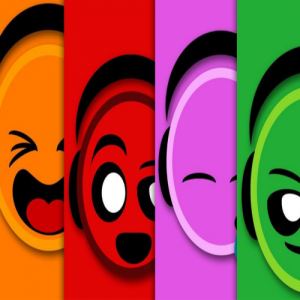On Saturday 14th May 2011 TNT Dance Hosted the second ever Salseology Live Music Social and we wanted to do something slightly different. Instead of having a regular class to kick start the night, we decided to show a movie about Salsa, La Epoca.
This movie was recommended to me by a friend and was being talked about a lot in the Salsa Scene. I did ask for an advanced copy of the movie but never received it but pursued this event regardless. There were some nice aspects to this movie there was also a lot that I massively disagreed with. I did articulate my thoughts at the time but Darius – Salseology Band Leader – wrote a very comprehensive response to this documentary.
This was originally posted on Salsa Central but since it was removed from their website I decided to re-post it as I find the opinion expressed very valuable.
By Darius Johnson, Band Leader of Salseology
What follows is my comprehensive personal response to La Epoca: The Palladium Era. Over the past few days, I have seen the movie twice and discussed/debated its content with several musicians and dancers. While I may reference the reactions of others in my discourse, my response is based solely on my own impressions, knowledge, opinions and experience.
While this response is by no means intended to promote me or any of my endeavors, I feel it is necessary to briefly note my own credentials for appropriate weighting of said impressions, knowledge, opinions and experience. I have been a musician since childhood, classically trained on violin. I studied electrical and computer engineering in university, but music has always been a part of my life: from chamber groups and symphony orchestras to charanga and salsa bands. While I have been playing salsa music for the better part of the past decade, I found my initial passion for salsa music as a dancer. I was a true salsaholic, dancing 5-7 days per week. Let’s be clear – I am NOT a Palladium Era dancer. Still, my path was quite normal and progressive by today’s standards: student, social dancer, amateur performer, instructor, professional performer, choreographer, director. Today, I devote most of my salsa energies towards running a new project in London called Salseology. It’s a live salsa band that caters to true salsaholics.
Now that my experience is identified and my personal biases thereby implied, let’s get to the documentary by Josue Joseph, La Epoca: The Palladium Era. In terms of an overall review, many are familiar with he stars method – I would give the movie two stars. For those more familiar with letter grades, it’s a D. While I will get into specific criticism of the content shortly, my main reason for rating this movie so poorly is that it falls flat on its face as a documentary. Only one narrow perspective is presented. “If you don’t see it this way, if you don’t do it this way, you’re wrong.”
The film feels more like an infomercial for the perspectives and products offered by Mr. Joseph. This is a massive failure for any documentary dealing with art forms such as music and dance. The many condescending pot shots taken at the music and dance known today as “salsa” are left unanswered – not one single musician involved in the commercialization and development of “salsa” was interviewed for their perspectives or responses to the scathing criticism levied against it. With so many experienced, knowledgeable salsa artists involved in the Fania era still living and performing today, their exclusion from this documentary strikes me as perverse. Moreover, the documentary exhibits a gross lack of awareness and knowledge about present-day salsa music and dance.
Overall, this documentary has been most heavily marketed to dancers – the vast majority of whom do not have (and in my opinion, do not need) an in-depth musical education, salsa or otherwise. It seems that the main purpose of this documentary is not to educate and moderate an intelligent discussion of the roots of the salsa music that we know and love today; but rather to raise questions and insecurities in today’s dancers, thereby enticing them to purchase Mr. Joseph’s products (lectures, dance workshops, musical compositions). While I do feel that the debate inspired by the documentary is valid, I find the tactics and methods used to promote a bygone era at “our” expense to be both arrogant and unscrupulous.
Although I will spend the remainder of this response providing some of the alternative perspective which Mr. Joseph should have researched and presented as a part of the documentary (perhaps instead of spending so much time pointing out different artists in photographs and playing full-length tracks from his album), it would be incomplete without my expression of appreciation for the Palladium Era musicians and dancers. Many of the stories they share are charming. Many of their opinions are noteworthy. And most importantly, without them sharing their talents and passions, salsa music and dance would not be what they are today. We absolutely inherited salsa from them and they are 100% deserving of our respect and admiration. While I could say much more to this effect, Mr. Joseph quite adequately and even eloquently covers this in the documentary. I’d like to instead focus on what he does cover and some aspects that I think he got plain wrong.
Perhaps the most disturbing inaccuracies in the documentary deal with the perceptions of present-day salsa music and dance. Mr. Joseph attempts to convince the viewer that music from the Palladium Era was intricate and complex while present-day music is over-simplified or “dumbed down”. Moreover, he wants us to believe that dancers of the Palladium Era danced with a true connection to the music while present-day dancers all dance the same (stiff, out of clave, etc). The documentary attempts to define “mambo” as dancing on2 and salsa as dancing on1. What Mr. Joseph does not tell us (or perhaps does not know) is that the “mambo” dancing featured in the film is “classic mambo” which includes steps on the fourth and eighth beats of the basic salsa count and does not contain the syncopation of today’s mambo dancing, referring specifically to the “New York style” on2 dancing made popular by the legendary Eddie Torres. Perhaps Mr. Joseph has never been to a salsa congress and experienced the massive level of skill and expression on display by today’s dancers. Do I prefer Eddie Torres’ mambo to “classic mambo”? I do. Is today’s mambo also salsa? Yes it is. We just call it salsa on2. Although I do have strong opinions about salsa on1 vs. salsa on2, I will leave that debate to the dancers. All that I will say is that whether you dance on1, on2, on7, or on Whatever, no one has the right to tell you that you are not dancing correctly to the music.
Mr. Joseph also paints a condescending picture of all musicians who play “salsa” as opposed to “son montuno” or “guaguanco” or “guaracha”. We are to accept without any alternative perspectives that musicians today (except himself and those present during the Palladium Era) have no awareness of the foundational rhythms that comprise salsa music. While this may be true for some amateur bands, it is a gross misrepresentation for most successful salsa musicians.
For the sake of argument, I will exclude salsa romantica, which is by more lyrical and commercial by design. Let’s instead focus on the Fania era musicians, who were most directly assaulted by Mr. Joseph’s documentary. These musicians played a style of music called “salsa dura”, which is coveted and adored today by the hardcore salsa dancers. The first fallacy is the premise that salsa rhythms are any different than the rhythms mentioned in the documentary. Salsa songs are largely built around the mambo rhythm that developed naturally from son. In fact, the default rhythm for a salsa song IS the mambo rhythm. Salsa IS son montuno. Salsa IS guaracha. Salsa IS guaguanco. Moreover, the differences between the various rhythmic forms are not essential for dancers to recognize. While the documentary does tell us that many of the Palladium Era pioneers’ songs were later remade by other artists, it does not mention two important facts: (1) The remakes of the songs enjoyed a level of success never achieved by the original composers. (2) Due to the break in relations between Cuba and the western world, the original musicians did not receive the credit (or royalties) they deserved. Perhaps these additional facts provide some perspective for the fervent lack of acceptance and condescension towards “salsa”?
Watching the documentary, I felt that half of it was dedicated to Arsenio Rodriguez and walking bass lines. It is worth pointing out that while most of Rodriguez’s tracks labeled as son montuno (for example) have a very similar feel, this is not necessarily true of all musicians throughout the Palladium Era. Each rhythmic form could vary in tempo and style from band to band. This is normal! It is how bands distinguish themselves. It is how music develops. Also, even though Rodriguez’s contributions to Cuban music were groundbreaking and imminently noteworthy, he never achieved great popularity in New York during his lifetime. His band was described as approaching the music in a tough, no-nonsense way. Many found that his music was not very danceable. With respect to the walking bass lines, this contribution has not been lost. It is quite frequently used in salsa music to varying degrees from the late 1960’s to present day, from salsa dura to salsa romantica to timba. I am at a loss to understand why Mr. Joseph devotes so much film time to is as if it is a long lost art form.
Marty Shelleer who has done musical arrangements for Tito Puente and other latin artists describes the major nuances between the different Cuban rhythms as being largely tempo-based. Dancers, embrace your partner work. Do not apologize for dancing cha cha cha to a son montuno. Do your shines when you feel inspired and go crazy with your turn patterns during a guaracha. In fact, the “steps” for the majority of the rhythmic forms discussed in the documentary were identical (yes, during the Palladium Era). What was truly different then was the dynamic between dance partners. Dancing to a guaguanco in the Palladium Era was only slightly more of a partner dance than today’s hip-hop. Yes, those dancers did more shines. But consider that if they did mostly partner work and we did mostly shines today, Mr. Joseph would have more than likely produced a documentary telling us that turn patterns and partner work are right and shines unmusical. Everyone has an opinion.
Outside of opinions, the preview for Part 2 of the series, La Epoca: The Lost Rhythms in Salsa, contains some questionable footage. It appears that Mr. Joseph will attempt to get more technical and educate the viewer in this next installment. However, the preview contains a scene discussing the functions of clave in which it is stated that the clave itself determines direction (i.e. 3-2 clave or 2-3 clave). This is factually inaccurate; clave direction is determined solely by melodic phrasing in the music. The clave on its own is like the tic-toc of a clock. It does not have a beginning or an end – nor does it have a direction until the other instruments are added.
Let’s stop working under the assumption that salsa is Cuban music. It is not Cuban, nor does it does make any attempt to be Cuban. The music has strong rhythmic roots in the traditional Afro-Cuban rhythms as well as influences from other Latin cultures, jazz, and even rock. I’m not ashamed to say that I like “salsa” music better than Palladium Era music. Today’s salsa dance music (again referring to salsa dura in particular) does indeed contain all of the elements Mr. Joseph wants us to accept as lost. A typical salsa dura song might commence with the mambo rhythm, move into bomba, go back to mambo, transition to guaguanco, and end with mambo. Consider one of my favorite bands from the Fania era, La Sonora Ponceña. If Mr. Joseph will listen to their music and continue to preach that the Palladium Era rhythms were lost with the creation of “salsa”, he is either ignorant of those rhythms himself or he is being disingenuous. Let us also admire and respect the enormous strides and improvements that came after the Palladium Era. For example, pioneers such as Pappo Lucca and Eddie Palmieri brought rich harmonies to our music. Ray Barretto, Mongo Santamaria and Orestes Vilató added new richness to the foundational rhythms. Ruben Blades transformed the lyrical possibilities of the music. Johnny Pacheco and Willy Colon created a market that spread the gospel of this amazing art form to all corners of the Earth. A more modern example, Oscar Hernandez’s Latin Grammy winning Spanish Harlem Orchestra shows how the foundational rhythms of salsa can be both authentic and commercially successful. Mr. Joseph, the Palladium Era is ended a long time ago. Accept this. But know that the contributions made during that important period are still alive and well today.





I know this article is old but I completely agree with your assessment of La Epoca’s films. I saw him twice in Vancouver in 2015 and his films were not what I thought they would be. Good thing I did not purchase it!